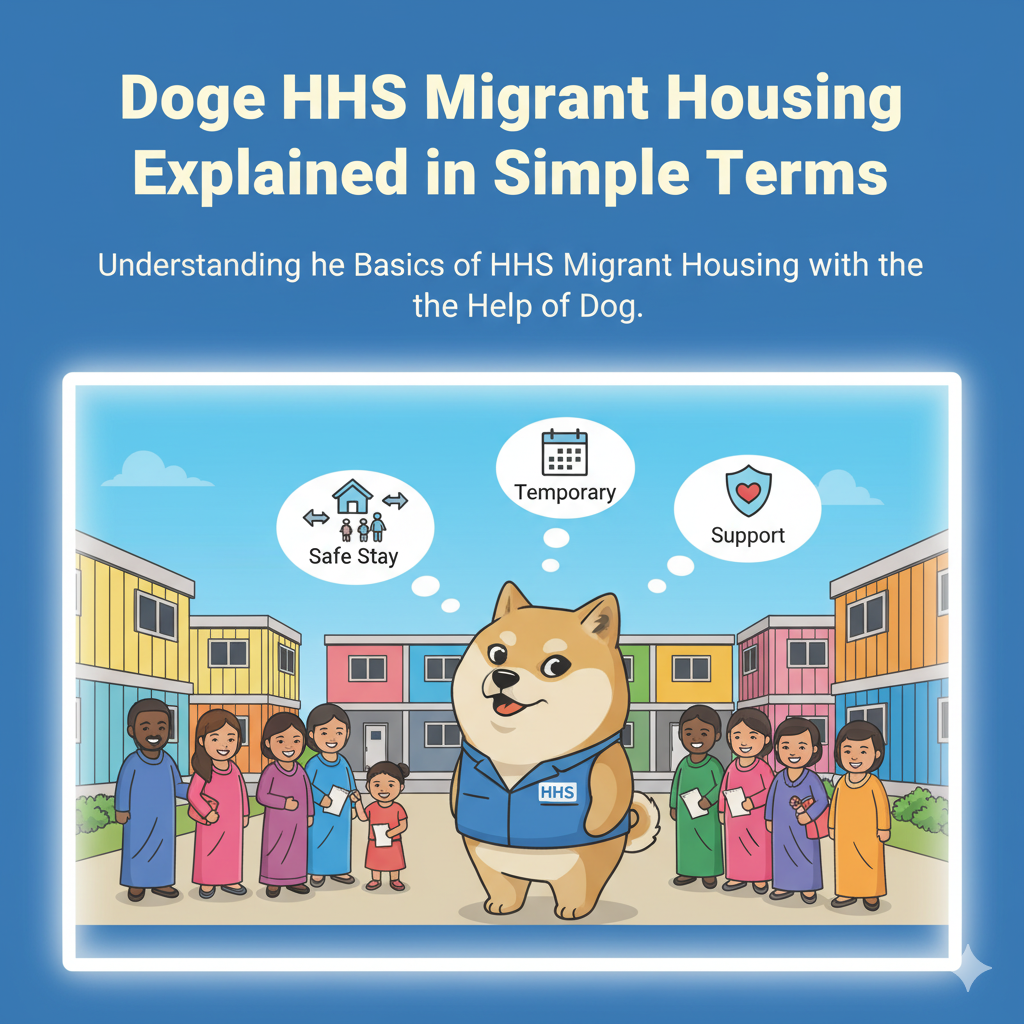In recent years, how has the term “Doge HHS Migrant Housing” crossed new high holds on the digital world? Info about the program has become the source of confusion for many, particularly about how it functions, what is its purpose, and who runs it. This is the very reason why, we take the pain to research and explain this program in its simplest form. What is HHS Migrant Housing Initiatives? What is the role of facilities such as the Doge Housing and Why is it critical to the United States’ humanitarian framework?
What Is HHS Migrant Housing?
An office titled the “Doge Housing Under the ORR division of the HHS” takes care of children who become separated from their parents or guardians while crossing the borders. Children who make it to the United States unaccompanied are first placed in HHS vetted migrant housing facilities. Children who are unaccompanied are placed in these facilities while unfitting a sponsor or family member.
The housing centers located under HHS are specialized and designed to make caregivers available in relation to health, shelter, medical aids, Education and. It is, therefore, the responsibility of the officials to consider the family ties and safety of these minors. It, therefore, program proves domination of illegal actions exercised over children who are unaccompanied and strangers under this particular circumstance.
What Does Mean “Doge HHS”?
“Doge HHS” is a specific contracted facility or service provider that works in partnership with the Department of Health and Human Services to administer the migrant housing. “Doge” is often referred to in the online world as a sort of nickname or internal project name for temporary housing operations, hence the name “Doge”.
Essentially, Doge HHS migrant housing is one of multiple facilities or management structures that fall under the HHS migrant program. Unlike detention facilities, these centers provide safe housing that aim to protect vulnerable populations, especially children.
Why HHS migrant housing is important .
The aim of the HHS migrant housing programs is to provide temporary care while showing compassion as well as complying with the federal law. Every facility is expected to comply with federally mandated standards for the health, safety, and education of every child. This includes:
Accommodations that provide safety: Living quarters that promote clean hygiene, food, and safety.
Access to health care: Clinics that promote mental and physical well-being and provide care.
Normalcy maintaining activities: Basic education and framework for organized, productive, recreational activities.
Family reunification staff: Employees that assist the children with connecting to their relatives or sponsors.
While respecting these guiding principles, the HHS-system for migrant housing maintains the balance between humanitarian attention and the legal obligations — making sure that children are not lost or neglected in the process.
The Process: From Arrival to Placement
For a better understanding of the functioning of the Doge HHS facilities, it is useful to have a bird eye’s view of the entire process.
Border Encounter: A migrant minor is spotted and flagged by border patrol.
Transfer to HHS: In a time span of 72 hours, the minor is transferred to one of the HHS approved housing centers.
Health and Safety Screening: Medical and mental health evaluations and assessments are administered.
Case Management: Staff start the process of identifying the child’s family or a suitable legal sponsor.
Reunification or Legal Placement: Once the child’s family or a legal sponsor is verified, the child is released for legal placement and ongoing support.
The entire process is aimed to ensure that children are protected from trafficking, abuse, as well as dangerous and unsafe situations.
Issues Confronting HHS Housing Centers
Well intentioned as the system may be, it still has its shortcomings. Sudden surges in migration may imbalance the facilities which in turn can cause problems with capacity and staffing. Furthermore, it is impossible to uphold the same level of care across the various facilities which may span the country.
The general public’s lack of understanding adds to these issues. Many people conflate migrant housing with detention centers when in fact, HHS housing is primarily aimed at care and protection rather than punishment.
To confirm adherence to transparency and accountability, periodic inspections and audits, along with primary partnerships with local players, ensure compliance with federal standards.
How Doge HHS Addresses This
Facilities like Doge HHS Migrant Housing increase the country’s capacity to shelter and provide protection to the minors entering the country. While Doge HHS operates within federal guidelines, the institution provides waiting minors with educational instruction, proper meals, and psychological support.
These centers also partner with various non-profit and community based organizations to provide tutoring, language instruction, and family support — enabling young migrants to settle and prosper even during turbulent periods.
Public Opinion and Internet Conversations
On the internet ‘Doge HHS migrant housing’ has gained notoriety, albeit with a fair share of conjecture along with ideological tussles. While noonie exchanges could get heated, it would be wise to discriminate between truths and guesswork. The reality of the situation is HHS migrant housing is a true saving grace meant to protect children and uphold global protection standards.
For researchers attempting to understand the issue, it is critical to validate information against primary sources, including but not to limited to HHS.gov, ORR documents, and objective newspapers, as opposed to the inflammatory hyperbole prevalent across social media.
Conclusion: Appreciating Contexts
Put more simply, Doge HHS Migrant Housing is the United States’ attempt at taking responsibly caring for unaccompanied minors at the border. The Department of Health and Human Services manages these facilities and provides safety, education, and family reunification for thousands of children annually.
Knowing how this system works is important so we can trade compassion and understanding for misinformation. Migrant housing programs are not political tools — they are the embodiment of the dedication of a nation to uphold basic human rights and bring relief to those most in need. Sources

